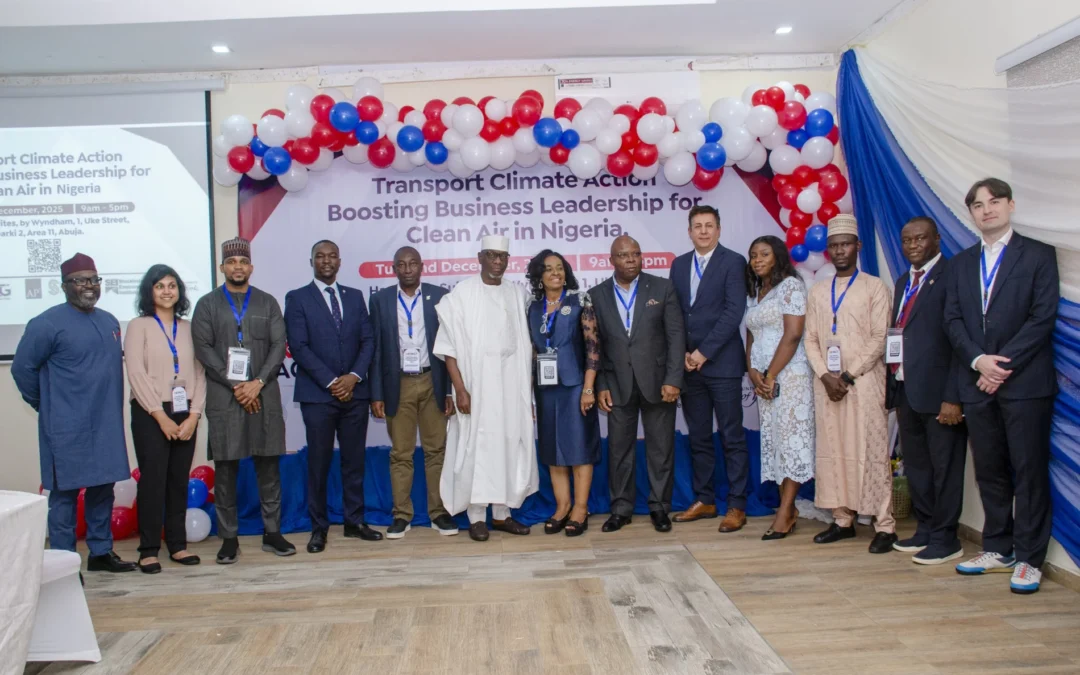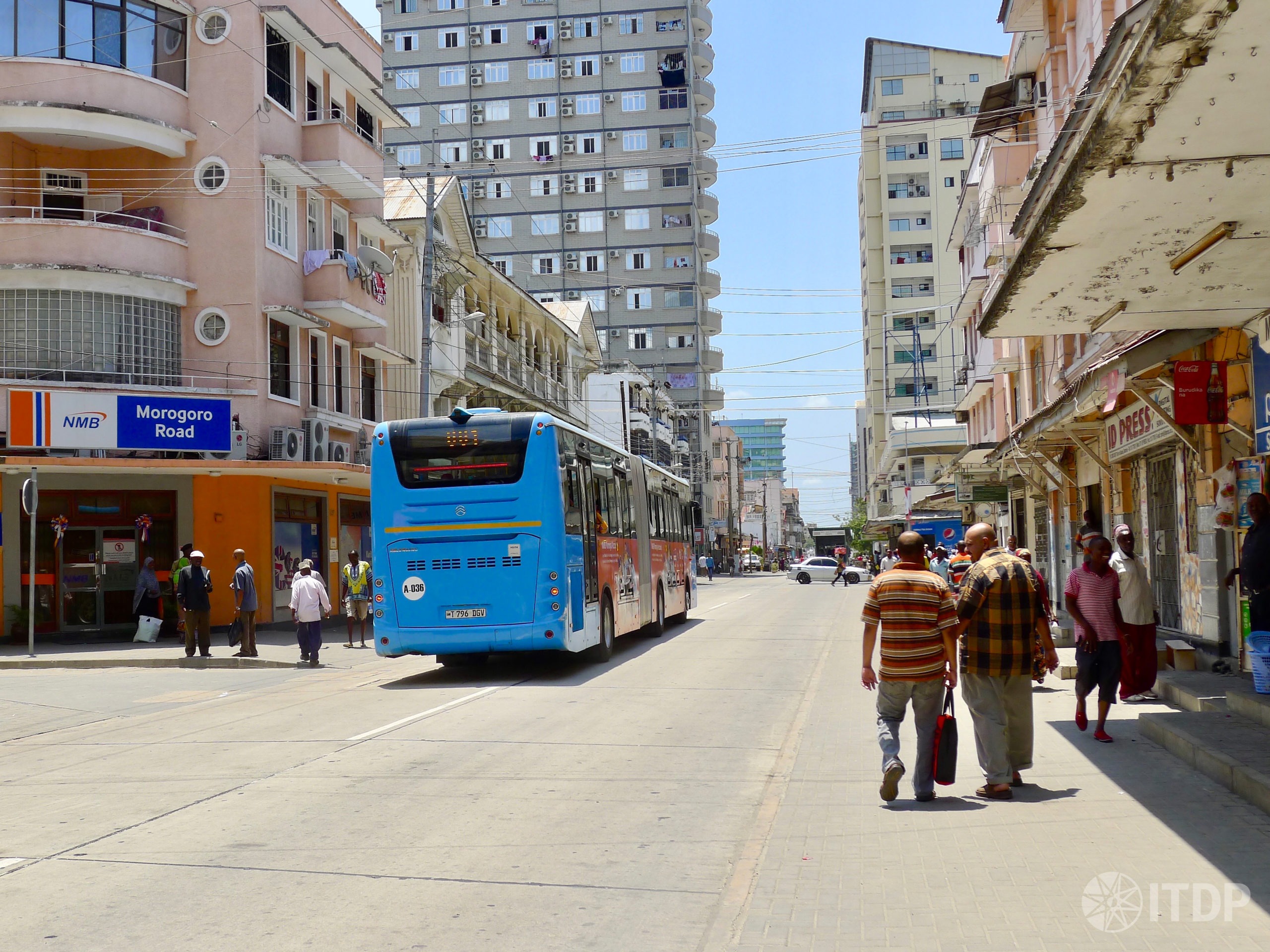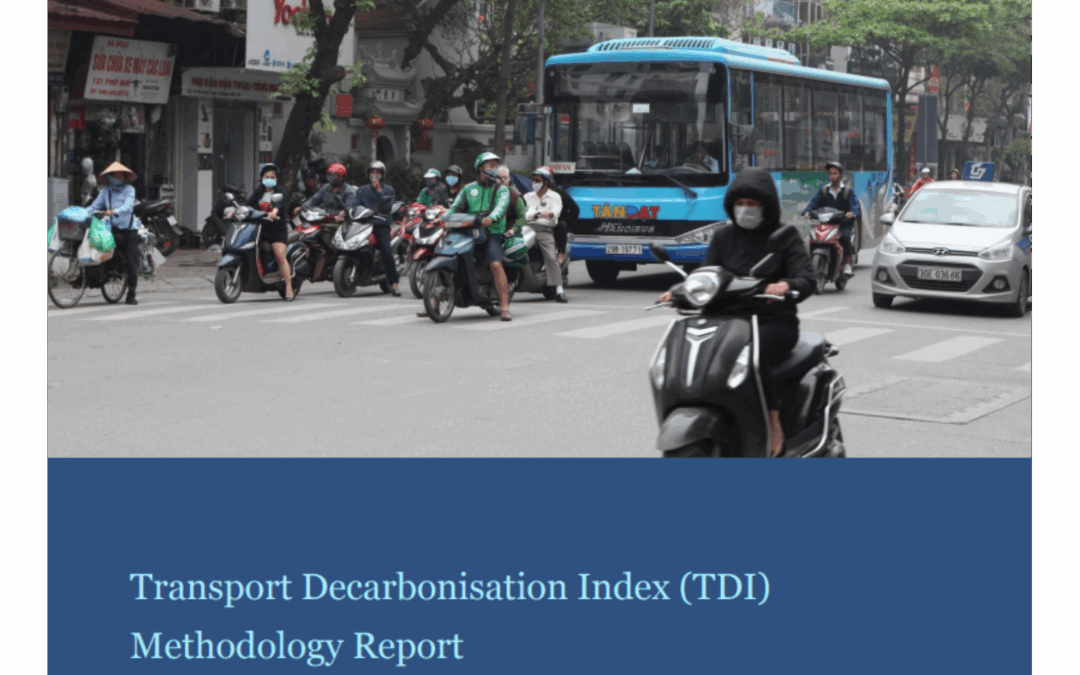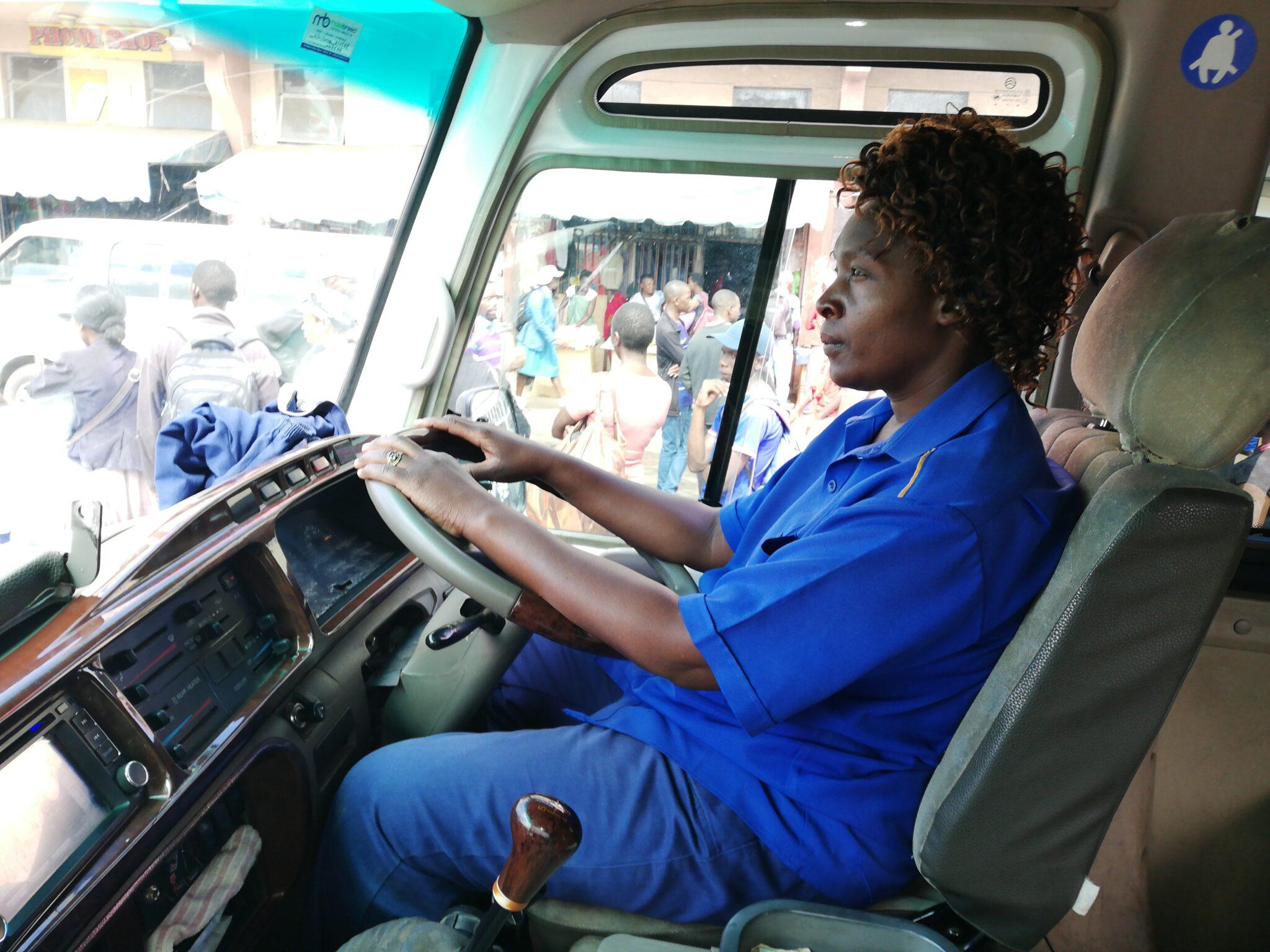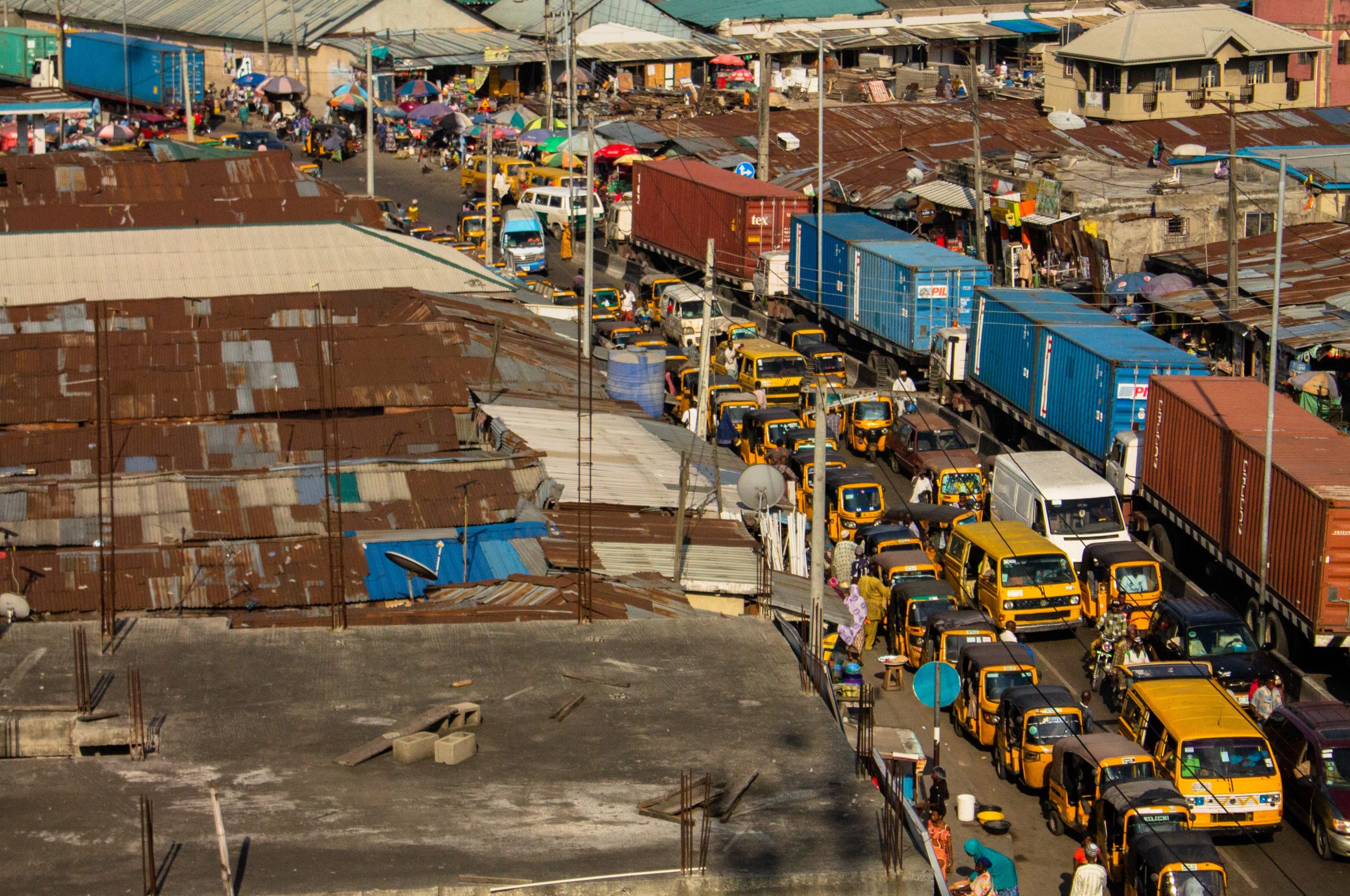Transit-Oriented Development (TOD) brings compact, mixed-use development in proximity to high-quality rapid transit. Shown here is the BRT corridor in Dar es Salaam.
Around the world, calls are increasing for cities to have jobs and amenities in close proximity to residences, reducing unnecessary vehicle travel and encouraging the use of active modes. Mixed-use development is at the heart of these urban plans, shortening commutes by ensuring that neighbourhoods have a combination of workplaces, housing, retail, education, and medical services. Yet today, many African cities are experiencing the opposite trend, with rapidly expanding sprawl leading to longer, more costly commutes. Given the growing impacts of climate change and the high cost of living, there is an urgent need to change the approach to urban planning in Africa to make cities more sustainable, affordable, and efficient.
Cities such as Nairobi and Dar es Salaam historically developed with a single commercial core surrounded by dispersed residential uses, leading to radial commute patterns and heavy congestion on major arterials leading to the city centre. Land use patterns reflect erstwhile colonial zoning rules, with stark segregation between high- and low-income areas. Lack of access to affordable housing close to job centres has contributed to the proliferation of informal settlements with insecure land tenure, poor access to sanitation and inadequate areas allocated to streets and public space. High-income districts feature large blocks and gated neighbourhoods with no access to walking and cycling facilities. In addition, building codes enforce minimum parking requirements, resulting in a plentiful supply of inexpensive parking. Public transport is inefficient, leading to the use of private cars for those who can afford it.
Transit-oriented development (TOD) offers a more equitable approach to land use planning, making it possible for job centres, markets, and housing to develop in close proximity to mass rapid transit. At the centre of TOD is high-quality public transport, such as bus rapid transit (BRT). African cities need to upgrade their public transport systems to free buses from traffic congestion and offer a viable alternative to the use of private cars. To facilitate access to public transport, urban plans need to incorporate pedestrian-oriented urban design, affordable housing, and a diverse mix of residential and non-residential uses.
Cities can incorporate TOD principles at several levels of planning. At the metropolitan level, zoning should be aligned with public transport networks to ensure that the majority of urban residents are within walking distance of high-quality rapid transit. In Kigali, the Master Plan 2050 places the highest residential and commercial densities along the city’s planned BRT network (Figure 1). In addition, the city offers a 30 percent higher floor area ratio (FAR) if at least 15 percent of the residential units in a project are affordable. Similarly, the Addis Ababa Structure Plan 2017-2032 sets a minimum FAR of 5.0 along BRT and LightRail Transit (LRT) corridors and 10.0 in the city centre, which is served by multiple rapid transit lines. There is no maximum FAR in these zones.
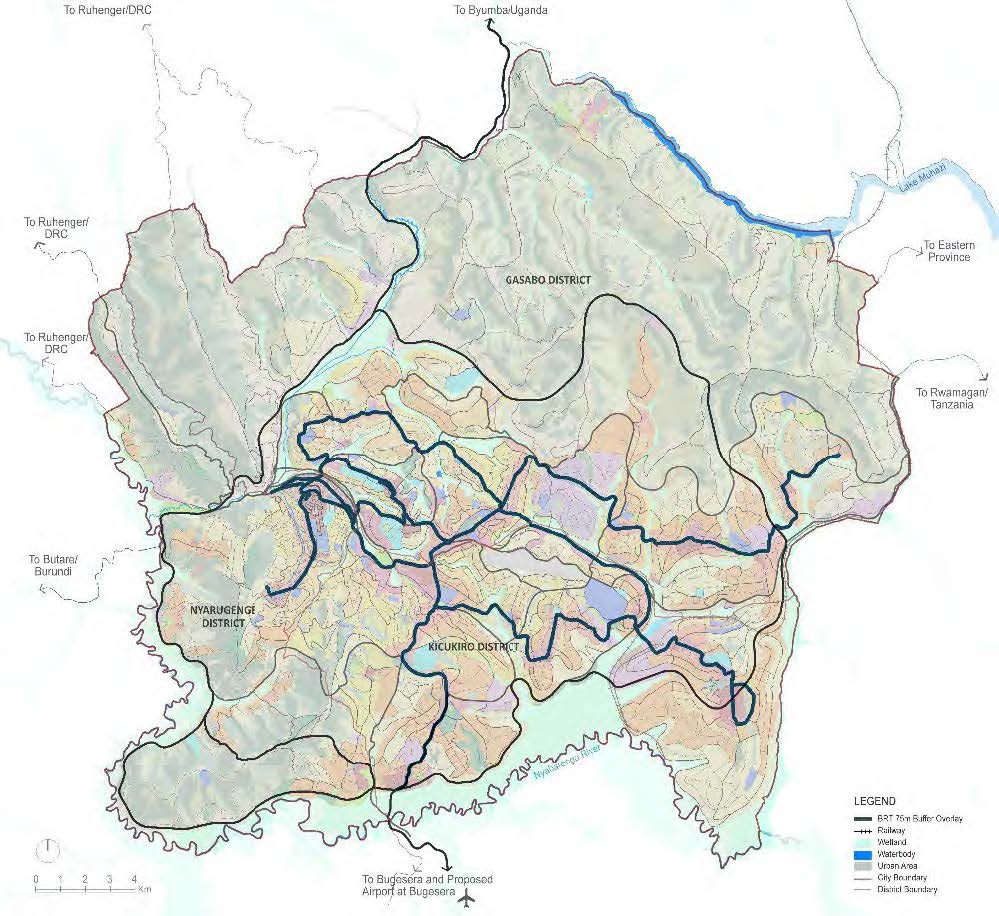
Figure 1: The Kigali Master Plan incentivises compact, mixed-use development along planned BRT corridors. (Source: City of Kigali)
At the neighbourhood level, TOD planning can facilitate the introduction of fine-grained street networks, new public spaces, and pedestrian-oriented built form. Local area TOD planning necessarily involves a physical planning process—not just written regulations. Local area plans identify opportunities to introduce new streets and pedestrian connections, helping to improve access to local services and rapid transit stations (Figure 2). Land readjustment can realign existing plot boundaries to facilitate improved pedestrian networks and reclaim land for the public realm.
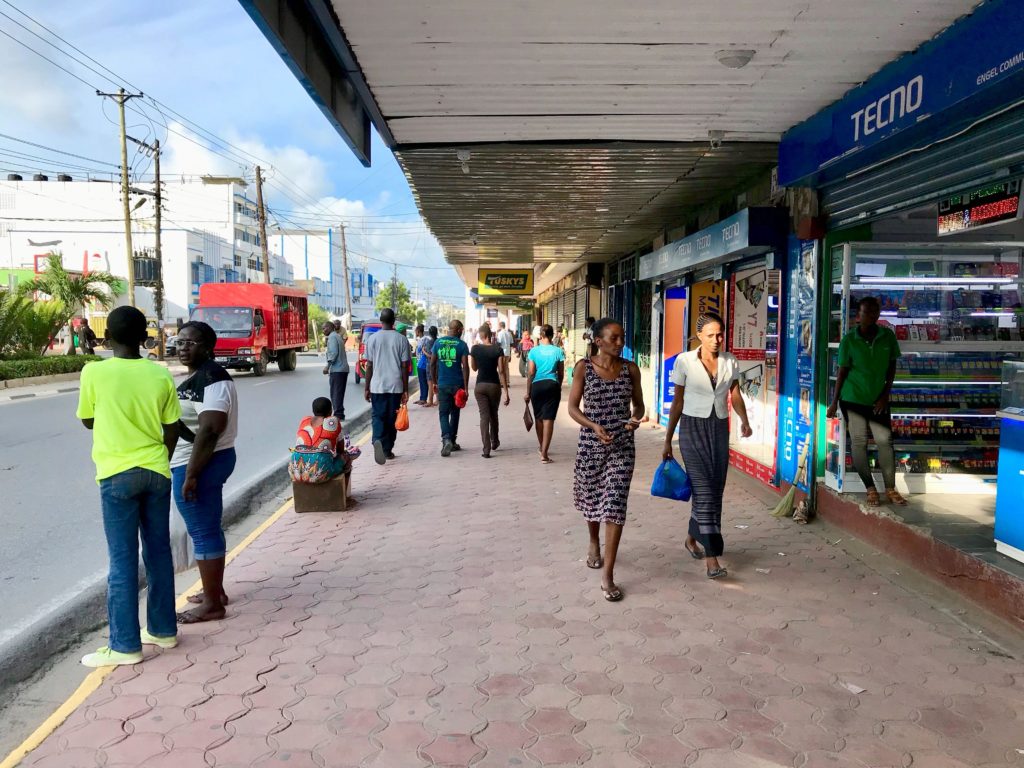 Figure 2: Pedestrian-friendly urban design, including active shopfronts and permeable facades, is a key element of transit-oriented development.
Figure 2: Pedestrian-friendly urban design, including active shopfronts and permeable facades, is a key element of transit-oriented development.
Given the diversity of urban forms in African cities, planners need to take a nuanced approach to developing TOD policies. In formal areas, cities can update building codes to mandate pedestrian-friendly urban design and eliminate off-street parking requirements. Informal areas require attention to land tenure, street improvements, and service provision, including upgrades in water, sewer, and drainage systems. Incremental in-situ upgrading of informal areas is a powerful means of improving services while minimising displacement of existing residents and businesses.
In Dar es Salaam, the Corridor Development Strategy identifies key BRT station types, categorised under five typologies, to ensure that measures to encourage higher-density, mixed-use development suit the local conditions (Figure 3). The 20.9 km first-phase BRT network spans several typologies, ranging from high-rise development in the central business district to low-density informal residential areas in the periphery. Densification in these areas can facilitate the introduction of complementary land uses and enable 24-hour activation of public spaces to improve security for local residents.

Figure 3: The Dar es Salaam Corridor Development Study proposes to improve basic services to facilitate densification along the phase 1 BRT network. (Source: President’s Office, Regional Administration and Local Government)
The Institute for Transportation and Development Policy (ITDP) is working with government agencies in Dar es Salaam to develop local area plans for two stations areas, Gerezani and Tandale, identifying local interventions to improve pedestrian access, urban design, utilities, and the quality of public space:
- The Gerezani station area is a bustling market centre with high-rise development combining retail space, go-downs, and residential flats. As the area continues to increase in density, the use of street space needs to transform to reduce the dominance of private cars, facilitate pedestrian mobility, and manage access for cargo vehicles.
- The Tandale area, by contrast, is largely informal, with dense, low-rise residential development with some local commercial uses. This station area requires improved drainage and sewage systems to improve liveability and support a growing population. Improved walking and cycling paths can enhance last-mile access to the BRT.
In sum, TOD reforms that are tailored to local conditions can maximise the use of rapid transit investments and expand access to well-located affordable housing. Compact growth in turn can contribute to reduced infrastructure costs, lower greenhouse gas emissions due to reduced private vehicle travel, and improved quality of life in urban Africa.
Going into COP27, governments and development banks have the opportunity to reaffirm commitments to investing in smart urban infrastructure, including citywide cycle networks, clean city bus fleets, BRT systems, and utility infrastructure. Following a TOD approach will enable governments to support equitable urbanisation and contribute to global efforts toward climate change mitigation and adaptation. COP27 also presents a chance for African governments to jump-start knowledge sharing across the region, ensuring that TOD plays a central role in political agendas from the national level all the way to local governance. With a transit-oriented approach, we can help to build more resilient cities and communities across the continent.

Carolyne Mimano
Carolyne Mimano is a Senior Communications Associate at ITDP-Africa. Before joining ITDP, Carolyne worked as an e-commerce consultant in the hospitality industry in Africa. She has also worked as the project lead for technology startups in the region. Carolyne is currently working with ITDP on diverse projects including a data dashboard for Africa, dynamic websites and an engaging communication strategy. Carolyne holds an MBA and a bachelor’s degree in Business Information Systems from the University of Nairobi.

Maureen Kinyua
Maureen Kinyua is an Urban Planning Manager at ITDP-Africa. Maureen’s purpose is led by advocating for socially and environmentally just, co-productive and strategic solutions, to issues and challenges faced in the rapidly urbanizing world; to promote sustainable and resilient communities, project developments, and initiatives. On top of an MSc in Urban Development Planning from the University College of London, UK, she also holds an MA in Urban Design from the University of Sheffield, UK and a Bachelor of Arts in Architecture from the University of Kent, UK. Before joining ITDP, Maureen worked as an Urban Designer and Planner at TRIAD Architects Ltd where she spearheaded the Master-planning Department for Triad Architects Ltd and streamlined the development of key procedures and processes within the department. Leveraging on her training and work experience, she has developed robust expertise in Master-planning, formulation of Urban Design and Development Frameworks, and Integrated Planning Standards and Principles.

Christopher Kost
Christopher Kost is the Africa Director. Chris joined the Institute for Transportation and Development Policy as a full-time staff member in 2008 after being involved as a consultant since 2004, focusing on transport projects in Africa and India. In Cape Town, Accra, and Johannesburg, he assessed the impacts of proposed BRT systems on greenhouse gas emissions. More recently, Chris has been involved in projects in the Indian states of Tamil Nadu, Maharashtra, Gujarat, and Jharkhand, covering areas such as bus rapid transit, street design, parking management, and transit-oriented development. Chris has been involved in a number of TOD projects, including the Local Area Plan for Ahmedabad’s Central Business District, an updated TOD policy for BRT corridors in Pimpri Chinchwad, TOD planning efforts for Chennai’s metro and suburban rail networks, and TOD elements in Nashik’s new Development Plan. Chris now leads ITDP’s initiatives in Kenya, Uganda, and other African countries. Before joining ITDP, Chris worked for the Transportation and Land Use Coalition (now Transform) in Oakland; the Metropolitan Transportation Commission, also in Oakland; the City of Berkeley’s Planning Department; Meyer, Mohadddes Associates, Los Angeles; and Delin Consult in Accra. Chris received his bachelor’s and master’s degrees in environmental policy from the Earth Systems Program at Stanford University.

Carolyne Mimano
Carolyne Mimano is a Senior Communications Associate at ITDP-Africa. Before joining ITDP, Carolyne worked as an e-commerce consultant in the hospitality industry in Africa. She has also worked as the project lead for technology startups in the region. Carolyne is currently working with ITDP on diverse projects including a data dashboard for Africa, dynamic websites and an engaging communication strategy. Carolyne holds an MBA and a bachelor’s degree in Business Information Systems from the University of Nairobi.

Maureen Kinyua
Maureen Kinyua is an Urban Planning Manager at ITDP-Africa. Maureen’s purpose is led by advocating for socially and environmentally just, co-productive and strategic solutions, to issues and challenges faced in the rapidly urbanizing world; to promote sustainable and resilient communities, project developments, and initiatives. On top of an MSc in Urban Development Planning from the University College of London, UK, she also holds an MA in Urban Design from the University of Sheffield, UK and a Bachelor of Arts in Architecture from the University of Kent, UK. Before joining ITDP, Maureen worked as an Urban Designer and Planner at TRIAD Architects Ltd where she spearheaded the Master-planning Department for Triad Architects Ltd and streamlined the development of key procedures and processes within the department. Leveraging on her training and work experience, she has developed robust expertise in Master-planning, formulation of Urban Design and Development Frameworks, and Integrated Planning Standards and Principles.

Christopher Kost
Christopher Kost is the Africa Director. Chris joined the Institute for Transportation and Development Policy as a full-time staff member in 2008 after being involved as a consultant since 2004, focusing on transport projects in Africa and India. In Cape Town, Accra, and Johannesburg, he assessed the impacts of proposed BRT systems on greenhouse gas emissions. More recently, Chris has been involved in projects in the Indian states of Tamil Nadu, Maharashtra, Gujarat, and Jharkhand, covering areas such as bus rapid transit, street design, parking management, and transit-oriented development. Chris has been involved in a number of TOD projects, including the Local Area Plan for Ahmedabad’s Central Business District, an updated TOD policy for BRT corridors in Pimpri Chinchwad, TOD planning efforts for Chennai’s metro and suburban rail networks, and TOD elements in Nashik’s new Development Plan. Chris now leads ITDP’s initiatives in Kenya, Uganda, and other African countries. Before joining ITDP, Chris worked for the Transportation and Land Use Coalition (now Transform) in Oakland; the Metropolitan Transportation Commission, also in Oakland; the City of Berkeley’s Planning Department; Meyer, Mohadddes Associates, Los Angeles; and Delin Consult in Accra. Chris received his bachelor’s and master’s degrees in environmental policy from the Earth Systems Program at Stanford University.













